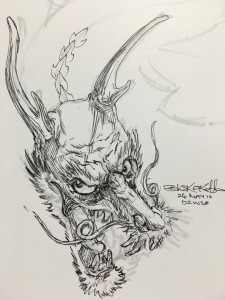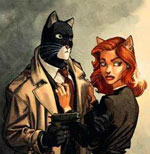 Podcast co-founder Brandon talks about building a daily drawing regimen, using Scott Robertson’s How to Draw.
Podcast co-founder Brandon talks about building a daily drawing regimen, using Scott Robertson’s How to Draw.
Then Kumar tells us about each of the various manga titles he’s recently translated. Looking for some good manga to read? Here are some ideas!
Finally, Tim talks about attempting to make podcasting profitable, and his self-published English study book and comic.
Below: a timetable of the episode, and more art from Brandon.
Continue reading #506 Drawing, Translating, Podcasting
Podcast: Play in new window | Download

 While Chris Taylor goes by the pen name “
While Chris Taylor goes by the pen name “

 The two main components of a comic are, of course, story and art. Your comic needs to be on point with both to work. This week’s comic totally brings one, and largely wings the other. We discuss
The two main components of a comic are, of course, story and art. Your comic needs to be on point with both to work. This week’s comic totally brings one, and largely wings the other. We discuss 

 Also in this episode, Tim, Mulele, and Kumar discuss the upcoming
Also in this episode, Tim, Mulele, and Kumar discuss the upcoming  Tim and Mulele set out to review
Tim and Mulele set out to review  What are the
What are the  Phil Hester gives Tim his take on breaking into the Big Two, the future of comics, Robert Kirkman’s manifesto, and more!
Phil Hester gives Tim his take on breaking into the Big Two, the future of comics, Robert Kirkman’s manifesto, and more!